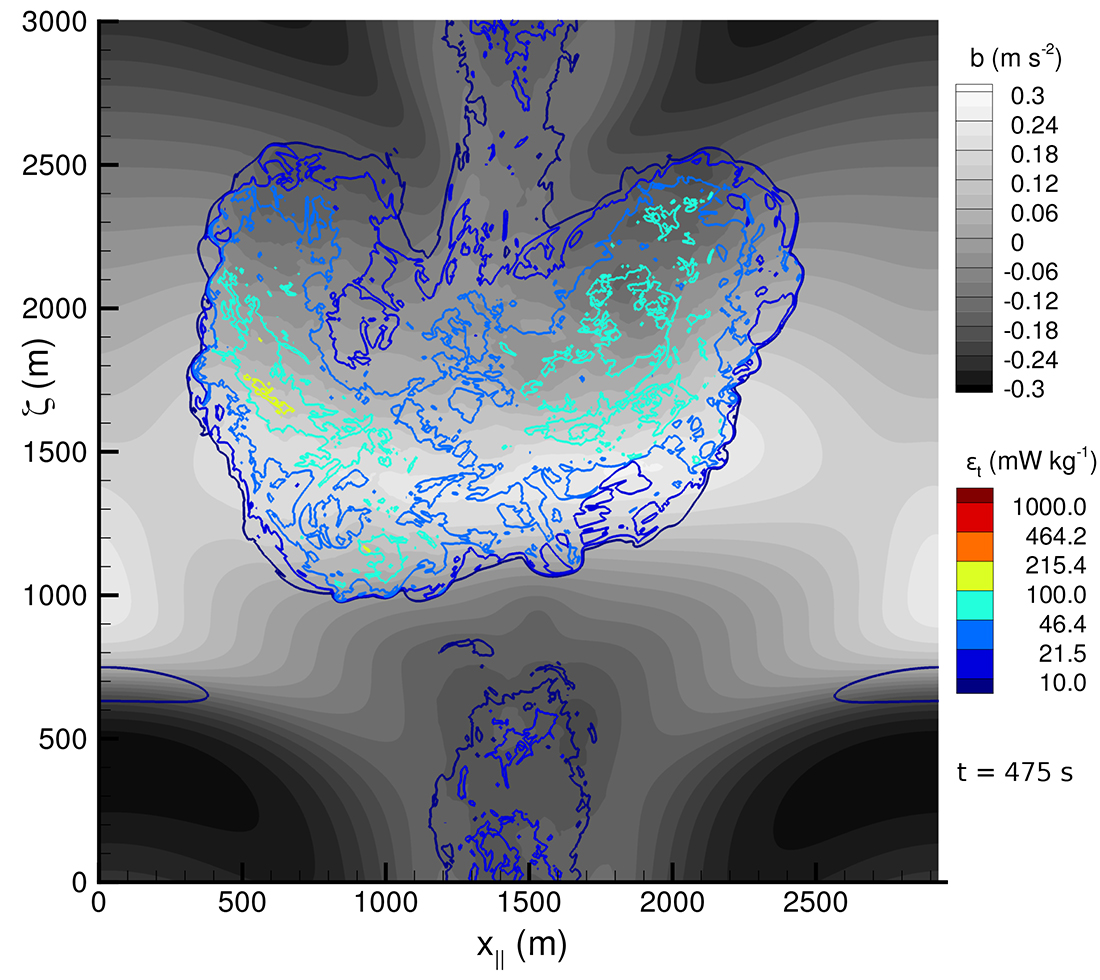ENVIRONMENT AND ENERGY
Numerical Simulation of Gravity-Wave Breaking in the Atmosphere
Principal Investigator:
Sebastian Remmler
Affiliation:
Lehrstuhl für Aerodynamik und Strömungsmechanik, Technische Universität München (Germany)
Local Project ID:
DNSGRAW
HPC Platform used:
Hermit of HLRS
Date published:
The flow in the earth's atmosphere involves many complex features. One of these features are so-called gravity waves. They become important as soon as they break somewhere in the atmosphere, since this breaking results in a strong patch of turbulence for no apparent reason. In order to improve the basic understanding of the breaking process, scientists conducted high-resolution simulations of different types of gravity-wave breaking events.
The flow in the earth's atmosphere involves many complex features. One of these features are so-called gravity waves. A gravity wave, similar to a wave on the ocean surface, is a regular pattern of rising and falling winds that travels through the atmosphere. The main differences to oceanic waves are the following:
- The wavelength (the distance between the crests) is much longer and can reach many kilometres.
- Gravity waves are usually invisible and it is difficult to detect them in meteorological measurements.
- Gravity waves travel in horizontal and vertical direction.
Gravity waves become important as soon as they break somewhere in the atmosphere, since this breaking results in a strong patch of turbulence for no apparent reason. Frequent flyers might know this phenomenon as "clear air turbulence". Gravity wave breaking can occur anywhere in the atmosphere, in the lower levels that are relevant for aeronautics, as well as in the higher levels close to the border to space. Breaking events in high altitudes do not affect us directly, but they influence the mixing and transport of substances like ozone and aerosoles, which have an effect on the long-term development of the earth's surface temperature. Therefore, it is important for simulations of next century's climate to predict exactly when and where gravity waves are breaking in the atmosphere.
The process of breaking gravity waves is not yet fully understood by meteorologists and climatologists. It is still difficult to predict accurately when and where gravity waves will break and how intense the breaking will be. In order to improve the basic understanding of the breaking process, a team of scientists of the Technische Universität München conducted high-resolution simulations of different types of gravity-wave breaking events. These simulations required the combined computing power of more than 4,000 processor units running for hundreds of hours. HPC system Hermit of HLRS Stuttgart served as computing platform for this project.
The results achieved are very reliable due to the high numerical resolution and provide a valuable insight into the mechanics of gravity wave breaking. The researchers were able to show that the breaking can occur in multiple bursts of turbulence and they characterized the duration, intensity and spatial extent of the turbulence generated. Furthermore, the results can be used as benchmark simulations for different kinds of numerical methods for the simulation of atmospheric flows.

Fig. 1: Turbulence generated in a breaking gravity wave. The grey scale shows the perturbed structure of the wave and the colored lines indicate the intensity of the generated turbulence.
Copyright: Lehrstuhl für Aerodynamik und Strömungsmechanik, Technische Universität MünchenScientific contact:
Dipl.-Ing. Sebastian Remmler
Lehrstuhl für Aerodynamik und Strömungsmechanik
Technische Universität München
Boltzmannstr. 15, D-85748 Garching bei München/Germany
e-mail: remmler@tum.de